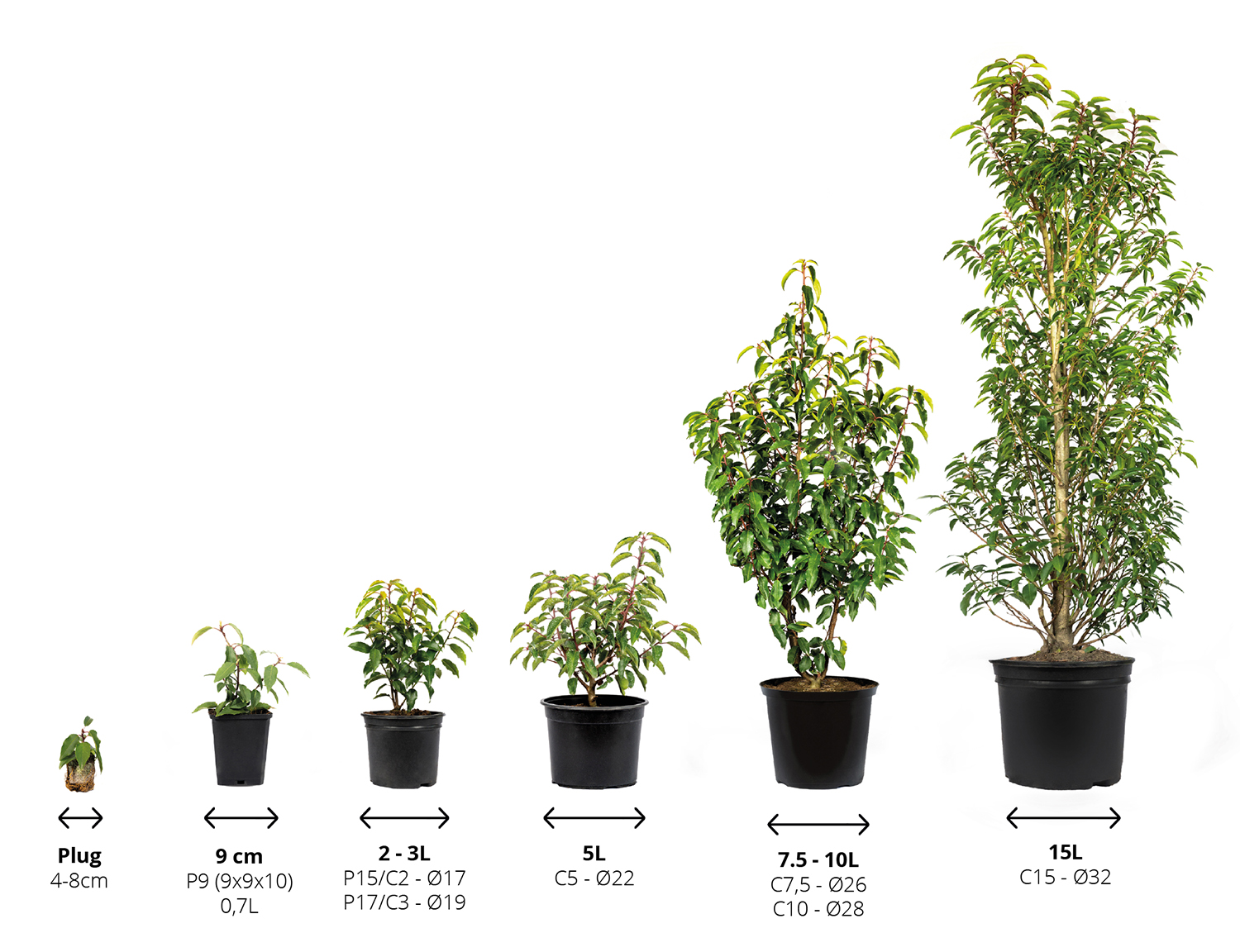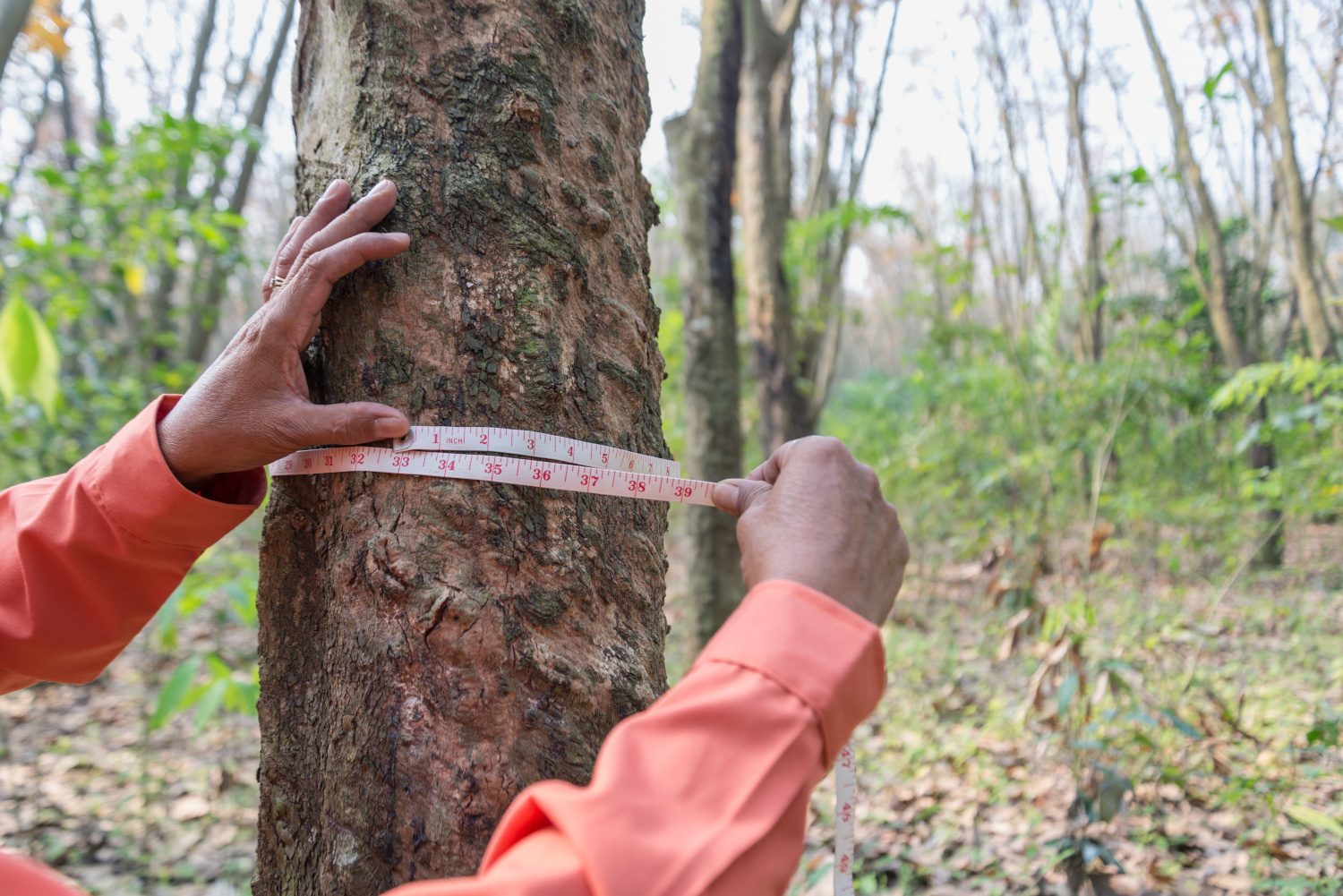Understanding pot sizes
Even industry professionals find themselves flummoxed by pot sizes – but Greenwood is here to guide you.
How are pot sizes measured?
The majority of plants will be sold in containers measured by volume, so a C5 pot will hold 5 litres of soil (the ‘C’ stands for container). So far, so simple. However, for pots that are less than 1L in volume, the diameter of the pot is measured instead. The main pot size available in this bracket is 9cm, since anything smaller is generally a plug from seed tray cells varying from 4cm to 8cm in diameter. But whether in seed tray or pot, they are referred to with a ‘P’ for plug. Therefore, a P5 refers to a seedling grown as a plug in a cell 5cm across, whereas a P9 would be a small plant in a 9cm container.
Some of the middle sizes may be referred to in either fashion (see illustration below). A 2L pot (C2), for instance, could also be referred to as a P15, depending on how the plant has been grown.
Why are the same plants sold in different pots?
Nurseries offer plants at different stages of growth. The less mature plants are more economic and, for some species, may be easier to transplant. However, they will take far longer to mature and reach full height, which may not suit the aesthetic demands of many commercial and new build projects.
It’s also important to understand the species of plant you’re buying to make a clear judgement. Faster-growing species in smaller pot sizes may be a sound investment, whereas their slower-growing counterparts may be an unwise choice.
Which pot sizes are best value for money?
There are no easy answers here because, while it may appear that one size is a more competitive price, there are a number of influencing factors. You are looking for robust plants with healthy root systems, not simply a bigger pot of soil – and this can be dependent on how they have been grown (with or without extra irrigation and fertiliser, for instance).
Which pot size for which height?
This is where it can get trickier for specifiers and landscapers. While the horticultural industry speaks in pot sizes, many landscape designs are planned based on plant height for instant impact – and there’s no way to guarantee a particular size of plant simply from the soil volume.
For one thing, if the plants have been freshly potted on, they may be at the smaller end of the scale for that species. Watering and nutrients provided whilst growing come into play again, too. However, there are rules of thumb. For instance, if your spec requires instant impact hedging, you tend to be looking at pot size C10 and above.

Typical pot sizes used for plants at Greenwood nurseries.
A container grown plant’s height is measured from the top of the soil. If you’re unsure when specifying which pot size best correlates to the required plant heights, it’s best to get some expert advice. Greenwood’s Tender Tool not only allows you to simply select your required plants and pot sizes, but there is also an instant messenger function that means you can access seasoned advice in the moment.
What are the pot sizes for trees?
Trees add another layer of complication. Not only are they available as bare-root (BR), root-ball (RB or container grown, but there is various terminology to describe their sizing. Container grown trees usually start at about the 4.5L mark, and for specimen or feature plants you’ll generally need at least a 15L pot (a tree in this container size would generally be expected to be 120cm or more in height). These trees are also known as standards, and have a portion of the trunk cleared of stems to add ornamental value.
However, most trees are measured by girth as opposed to pot size, with the stem measurement taken 1m above the soil. (Pot size is often only measured where there in limited planting space available.) Small trees (8-10cm) will require several years’ maturation before making much impact, wherease a 16-18cm girth will make considerable impact immediately (it takes, on average, a year for trees to grow one girth size).

Trees are often sold by girth rather than container size.
What is important to consider when choosing pot sizes?
Specifiers always need to strike a balance between budget, timescale and impact. It is vital to identify the key feature plants or areas which require immediate impact (a privacy screen for example). Here, there is no point skimping on pot size.
In areas where there is room for plants to mature over time, you can save money by selecting smaller pot sizes.
Another consideration (particularly, perhaps, for trees) is the cost of transportation for larger pot sizes. With deliveries frequently charged by weight, very large containers mean paying to transport a good deal of soil!
For further advice, do get in touch with one of our friendly plantsmen, who will be delighted to discuss your needs.

